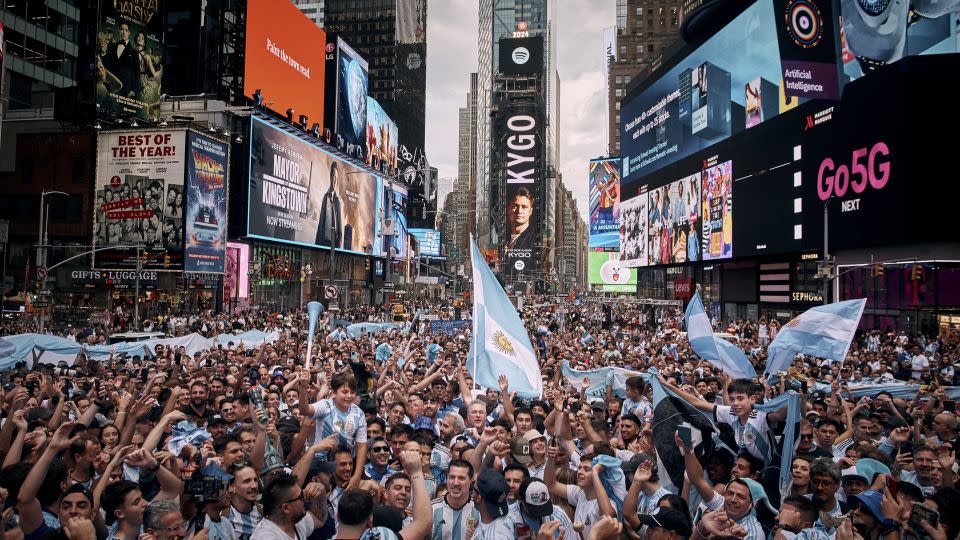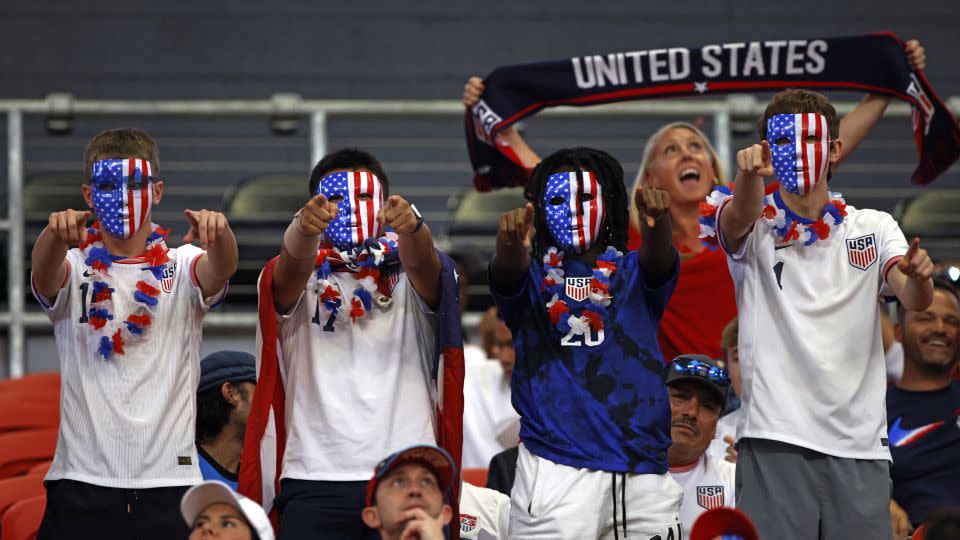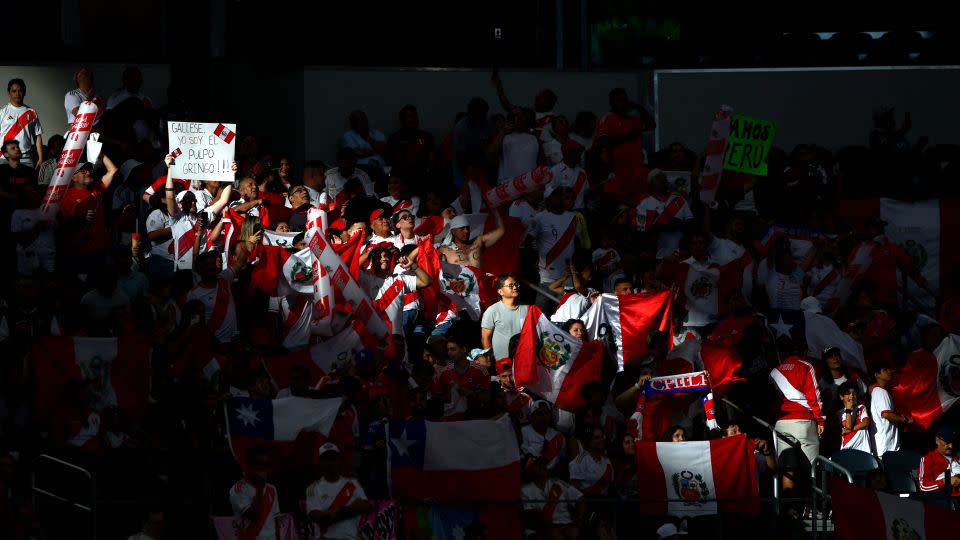The US has crashed out of Copa América. But these photos show how fans are embracing soccer in the US
Their exuberant voices flooded New York’s Times Square. Children sat on shoulders, hands raised; others jumped to the beat of their national songs. Their sky-blue-and-white striped jerseys cascaded through the streets, their matching flags waving overhead.
Argentina, and beloved captain Lionel Messi, were playing later that day in New Jersey as part of Copa América, the soccer tournament featuring countries from North and South America. And everyone — Argentine or not, soccer fan or not — seemed to know about it.
The US Men’s National Team had a disappointing showing in the tournament, losing 1-0 Monday night to Uruguay and failing to advance to the knockout stage. But if Copa 2024 truly is a dress rehearsal for the 2026 FIFA World Cup, which the US will co-host with Canada and Mexico, enthusiasm for this summer’s event has shown the United States is more than ready.
Fans have broken attendance records, both for matches involving the US Men’s National Team and for other countries. In the crowds outside stadiums, in the jersey-clad bodies packed into bars, in the small talk around offices — the 2024 Copa América is smashed any ideas that US is not a soccer country.
When the US first hosted Copa América, back in 2016, soccer still seemed like a new frontier in American sports. That tournament, fresh off the 2014 World Cup, was hailed as a success; the USMNT’s group stage matches attracted an average of about 1.5 million viewers.
The 2024 Copa América has already rendered those records obsolete, doubling the viewership for US matches in some cases.

This year’s tournament, which ends July 14, isn’t even halfway over, and the most exciting part — the knockout stage — has yet to begin. Still, Americans have been watching in record numbers. The USMNT’s opening game against Bolivia drew 3.2 million viewers, according to Fox Sports, becoming the network’s most watched non-World Cup soccer broadcast ever.
In 2016, those numbers would have been mind-boggling.

By some measures, the mammoth success of the US Women’s National Team and the National Women’s Soccer League, considered by some to be the best women’s soccer league in the world, has created an environment for soccer to flourish in America. Women’s soccer has long found talent, investment and fans stateside, while other countries have mainly played catch-up. And soccer has long been a popular sport among America’s youth.
“The rest of the world says America isn’t interested in soccer. I’m not so sure,” David Beckham wrote in his 2004 autobiography “Beckham: Both Feet on the Ground.” “Every time I visit, I see kids playing in parks and on school and college campuses everywhere. … There’s a buzz around soccer in the States that points toward a very exciting future.”
Twenty years later, this year’s Copa América success proves Beckham’s words are ringing true.

The hype extends past viewership and into attendance. In 2016, the US’ game against Costa Rica in the group stage drew 39,642 people to Chicago’s Soldier Field — leaving the stadium less than two-thirds full.
Last week, 59,145 people packed Mercedes Benz Stadium in Atlanta to watch the USMNT battle Panama, creating an environment so raucous that their explosion of cheers could be heard from outside the venue.
Nathan Miller, a 28-year-old PhD candidate at Georgia Tech, attended that game against Panama. He’s been a fan of the US team since 2010, he told CNN, but this was his first time seeing them play live.
Miller grew up playing soccer — his whole family did — but until recently he didn’t know many people who actually watched the sport.
“I think it’s a ground-up thing, where if MLS continues to grow, which it has been, and pulling international stars like Lionel Messi, I think that’s going to be something that drums up more American soccer fans in general,” he said.

Miller remembers those 2016 Copa America matches. At the time, he and a group of friends would go to a Buffalo Wild Wings to watch the US play — sometimes needing to ask the restaurant to put the matches on the TVs. Now, he said, a bar by his apartment complex has signs with the US Soccer logo on it. And the Mexican restaurant next door has been advertising drink deals during Copa matches.
“I think it’d be harder now to find a place that wasn’t showing the game, as compared to back then,” he said.
The growing diversity of the US population may be helping boost soccer in the country as more immigrants arrive with a deep passion for the sport, Miller said.
Even so, smaller countries still have a harder time drawing crowds. When Ecuador faced Jamaica on June 26 in Las Vegas, Allegiant Stadium was less than half full. Just 15,000 fans came out to see Peru play Canada in Kansas City.
By contrast, when powerhouse Argentina played rival Chile last week in New Jersey’s MetLife Stadium, more than 80,000 fans came to watch. Many of them had been carousing in Times Square only hours earlier.

Still, US fan interest is growing, and the 2024 Copa America may be another key step in its evolution. In two years World Cup matches will be played in 11 US cities, from Seattle to Miami — an event that will bring in thousands of fans from around the world and infuse the US with even more interest in the beautiful game.
The 2026 World Cup final will be played at MetLife Stadium outside New York City. If defending champion Argentina reaches the title match, Times Square may once again become a roiling sea of blue and white.
For more CNN news and newsletters create an account at CNN.com

 Yahoo Sport
Yahoo Sport 






































